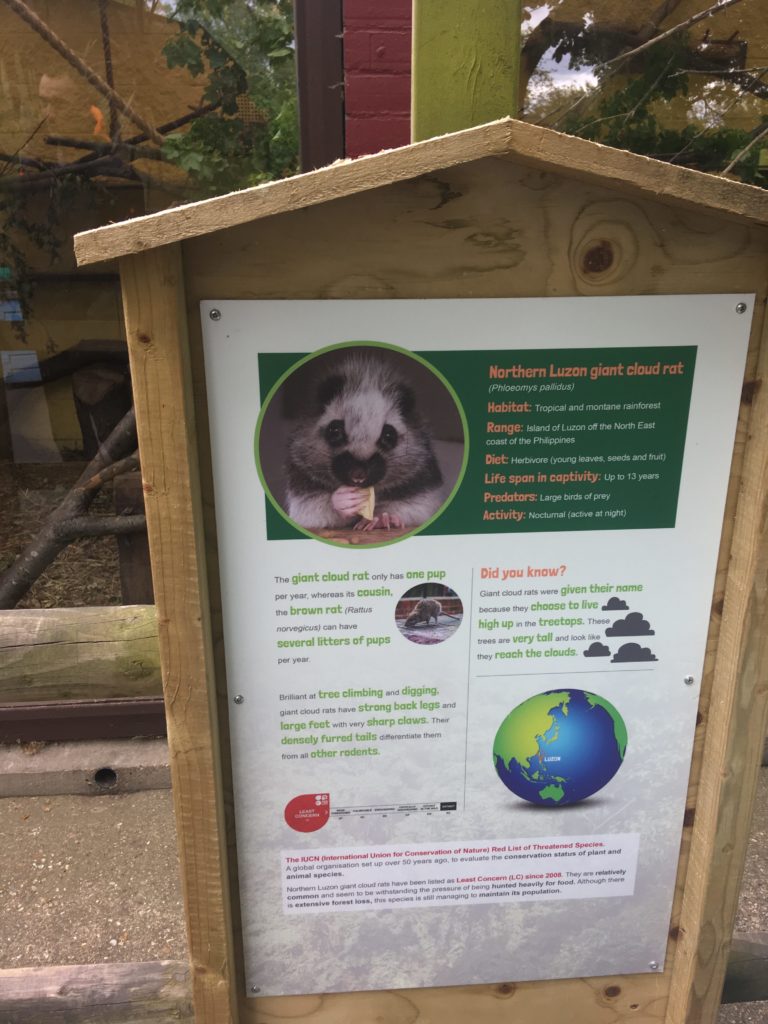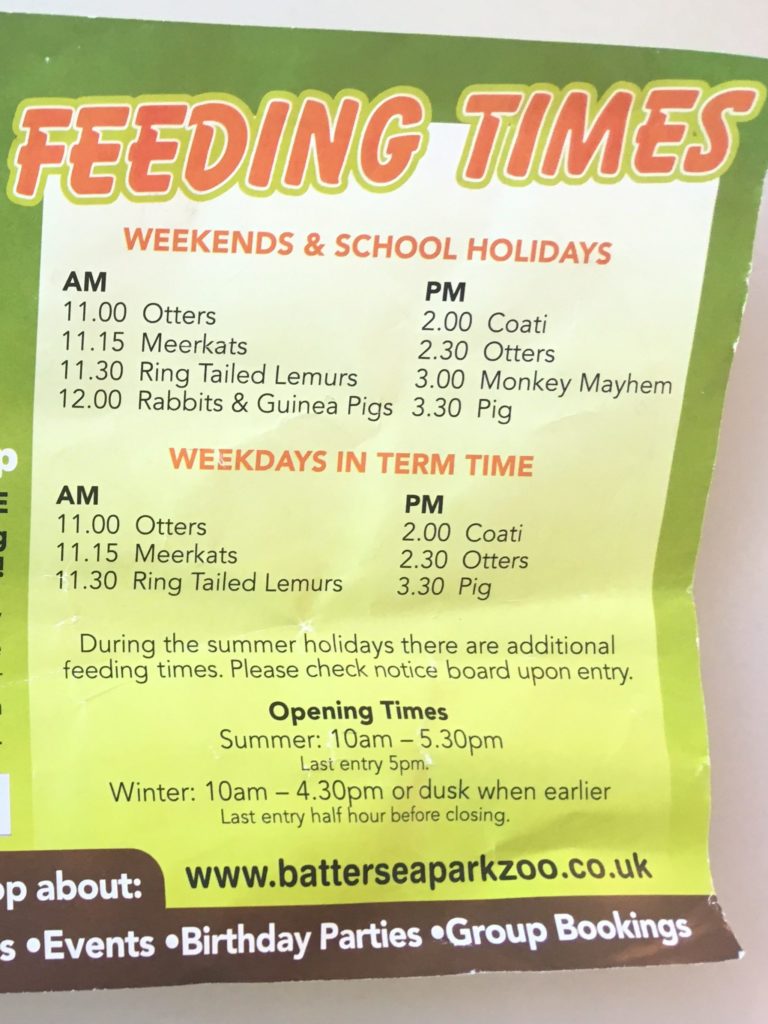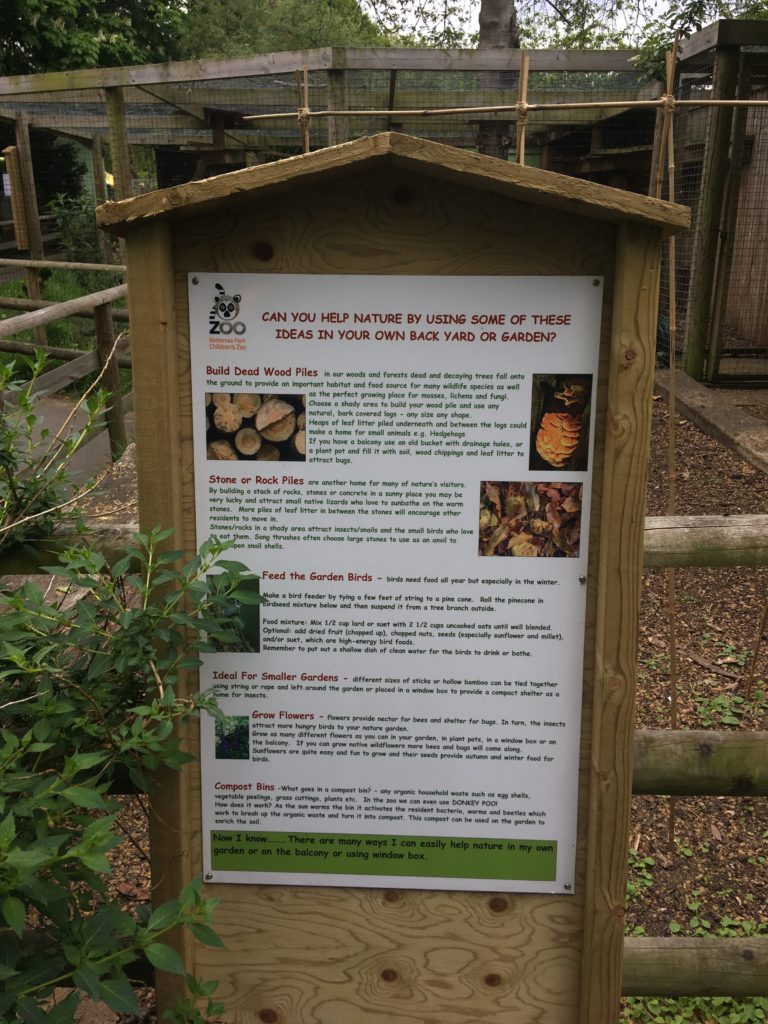Battersea Park Children’s Zoo offers visitors the opportunity to see animals up close and find out more about the environment and natural habitats. During my visit I looked for examples of good practice that related to our science engagement reflection points.
Confidence and ownership
 The zoo provides tools that allow visitors to take ownership of their visit. Upon arrival at the zoo each visitor is handed a map, including information on feeding times and keeper talks, and actively encouraged to explore the zoo self-guided. The signage throughout the zoo is clear and informative, aiding your visit and making it as easy as possible. The information about each of the animals is presented in an accessible way and allows for a varying amount of engagement based on how much the visitor wishes to delve. The highlighted area of the sign breaks down the key information into digestible chunks including species, habitat, and diet and the other areas of the sign provide further layers of engagement.
The zoo provides tools that allow visitors to take ownership of their visit. Upon arrival at the zoo each visitor is handed a map, including information on feeding times and keeper talks, and actively encouraged to explore the zoo self-guided. The signage throughout the zoo is clear and informative, aiding your visit and making it as easy as possible. The information about each of the animals is presented in an accessible way and allows for a varying amount of engagement based on how much the visitor wishes to delve. The highlighted area of the sign breaks down the key information into digestible chunks including species, habitat, and diet and the other areas of the sign provide further layers of engagement.
Promote Science Talk
 There are members of staff on hand to assist your visit and keepers, at feeding times, engage with visitors encouraging them to share their experience. I got to see the caoti feeding and it was great to see visitors being brought into the conversation. Visitors were asked, what do you/your pets like to snack on? What time do you snack? Do you think our Caotis would like the food you/your pets eat? If not what do you think they’d eat? The use of questions initiated a two-way conversation that got visitors to discuss with each other and facilitated them trying to get to the answers. It made the experience more memorable and relatable than just giving the information specific to those animals and moving on.
There are members of staff on hand to assist your visit and keepers, at feeding times, engage with visitors encouraging them to share their experience. I got to see the caoti feeding and it was great to see visitors being brought into the conversation. Visitors were asked, what do you/your pets like to snack on? What time do you snack? Do you think our Caotis would like the food you/your pets eat? If not what do you think they’d eat? The use of questions initiated a two-way conversation that got visitors to discuss with each other and facilitated them trying to get to the answers. It made the experience more memorable and relatable than just giving the information specific to those animals and moving on.
Extending the experience
 Whilst exploring, I came across a section that was all about things you could do to help the natural world when you were back at home. These ideas extend the visit as they both pose questions to think about, and offer activities to try out, post visit. The activities are good discussion starters as they make you relate your visit to what you already know and think about nature and conservation. The variety of activities offered provide something for everyone as they range in difficulty, ease of obtaining materials, as well as home environments they can be completed in. I liked the suggestion of filling an old bucket with drainage holes, or plant pot, with soil, leaf litter and/or wood chips to attract bugs as it’s quite easy for anyone to do regardless of where they live.
Whilst exploring, I came across a section that was all about things you could do to help the natural world when you were back at home. These ideas extend the visit as they both pose questions to think about, and offer activities to try out, post visit. The activities are good discussion starters as they make you relate your visit to what you already know and think about nature and conservation. The variety of activities offered provide something for everyone as they range in difficulty, ease of obtaining materials, as well as home environments they can be completed in. I liked the suggestion of filling an old bucket with drainage holes, or plant pot, with soil, leaf litter and/or wood chips to attract bugs as it’s quite easy for anyone to do regardless of where they live.
In our ‘out and about‘ series we go searching for examples of good science engagement practice. Have you got any examples you’d like to share with us? If you’ve seen any examples or have ideas for places you think we should visit, get in touch!